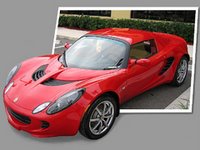
The following are a few handy tips which will help you be more productive in GIMP.
Handy Tips for GIMP users
- Add the PSPI plugin - This plugin will allow you to install and use most Photoshop filters in GIMP.
- Install the Layer effects plug-in - This plug-in will club filters such as drop shadow, color overlay, bevel and embross, inner shadow, inner glow and so on into one group thus easing your work.
- Install the Separate+ plug-in which will bring CMYK color separation in GIMP.
- Install the Liquid Rescale plug-in.
- Add additional brushes. GIMP already comes with a default set of brushes but you can download more variety from websites such as blendfu.com.
- Anchor the windows - There is an always on top option for GIMP dialog windows. Use them to your advantage.
- Install the GIMP Animation Package (GAP) - Helps you create animated GIFs, surrealistic landscapes and realistic water motion.
- Enable GEGL in GIMP. This feature is available only in GIMP 2.6 and above.




